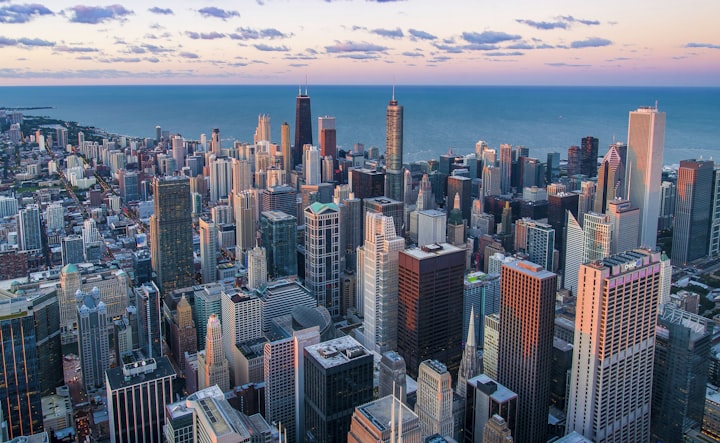The Future of Sustainable Cities: A Blueprint for a Greener Tomorrow
Pioneering Urban Solutions for a Thriving, Eco-Friendly Future

Introduction
As the world's population continues to grow, urbanization has become an inevitable reality. With more than half of the global population now living in cities, the need for sustainable urban development has never been more pressing. In this article, we will explore the concept of sustainable cities, the challenges they face, and the innovative solutions being implemented to create a greener tomorrow. As we delve into the world of sustainable urban planning, we will discover how these eco-friendly metropolises are shaping the future of our planet.
The Concept of Sustainable Cities
A sustainable city is one that meets the needs of its current inhabitants without compromising the ability of future generations to meet their own needs. This involves striking a balance between economic growth, environmental protection, and social equity. Sustainable cities prioritize the efficient use of resources, minimize waste and pollution, and promote a high quality of life for their residents.
Challenges Faced by Sustainable Cities
Rapid Urbanization: As more people flock to cities in search of better opportunities, the demand for housing, infrastructure, and services increases. This rapid urbanization puts immense pressure on natural resources and can lead to environmental degradation if not managed properly.
Climate Change: Cities are major contributors to greenhouse gas emissions, which exacerbate climate change. Sustainable cities must find ways to reduce their carbon footprint and adapt to the changing climate.
Social Inequality: Urban areas often experience significant income disparities, leading to social unrest and a lack of access to essential services for marginalized communities. Sustainable cities must address these inequalities to ensure a high quality of life for all residents.
Innovative Solutions for Sustainable Cities
Green Infrastructure: Green infrastructure refers to the integration of natural systems and processes into urban planning and design. This can include green roofs, urban parks, and permeable pavements that help manage stormwater runoff. These features not only improve air and water quality but also provide recreational spaces for residents and support local biodiversity.
Green roofs, for example, are vegetated surfaces installed on top of buildings. They help reduce energy consumption by providing insulation, absorb rainwater, and create habitats for urban wildlife. Urban parks, on the other hand, offer residents a place to relax, exercise, and connect with nature, while also serving as essential green spaces that help combat the urban heat island effect.
Renewable Energy: Sustainable cities are increasingly turning to renewable energy sources such as solar, wind, and geothermal power to reduce their reliance on fossil fuels. By investing in clean energy infrastructure, cities can significantly reduce their greenhouse gas emissions and promote energy independence.
For instance, cities like Copenhagen and San Francisco have set ambitious goals to become carbon-neutral by 2025 and 2045, respectively. These cities are investing in renewable energy projects, such as wind farms and solar power plants, to achieve their targets and serve as models for other urban centers.
Sustainable Transportation: Encouraging the use of public transportation, cycling, and walking can help reduce traffic congestion and air pollution in urban areas. Sustainable cities are investing in efficient public transit systems, bike-sharing programs, and pedestrian-friendly streets to promote alternative modes of transportation.
Cities like Amsterdam and Copenhagen are known for their extensive cycling infrastructure, which includes dedicated bike lanes, bike parking facilities, and traffic signals specifically designed for cyclists. These efforts have led to a significant increase in the number of people choosing to cycle as their primary mode of transportation.
Smart Cities: The integration of technology into urban planning can help cities become more efficient and sustainable. Smart cities use data and analytics to optimize resource consumption, improve traffic flow, and enhance public safety. Examples of smart city technologies include intelligent street lighting, real-time traffic management systems, and smart waste collection.
Barcelona, for example, has implemented a smart city initiative that includes sensors to monitor air quality, noise levels, and traffic congestion. This data is used to inform urban planning decisions and improve the overall quality of life for residents.
Inclusive Urban Planning: Sustainable cities must prioritize social equity and ensure that all residents have access to essential services such as healthcare, education, and affordable housing. Inclusive urban planning involves engaging with local communities and incorporating their needs and perspectives into the decision-making process.
One example of inclusive urban planning is the participatory budgeting process used in cities like Porto Alegre, Brazil. This approach allows residents to have a direct say in how public funds are allocated, ensuring that resources are distributed equitably and addressing the needs of marginalized communities.
Conclusion
The future of sustainable cities is bright, as innovative solutions continue to emerge and gain traction worldwide. By embracing green infrastructure, renewable energy, sustainable transportation, smart city technologies, and inclusive urban planning, cities can become more resilient, environmentally friendly, and equitable. As we look towards a greener tomorrow, the blueprint for sustainable cities offers a promising path forward, ensuring that our urban centers remain vibrant and thriving for generations to come.
About the Creator
Muhammad Adil
i am Medical student, writer, peace activist. Creating impactful content on medicine, wellness, books, and peace. Join their journey on Vocal Media. #InspireChange #MakeADifference






Comments
There are no comments for this story
Be the first to respond and start the conversation.